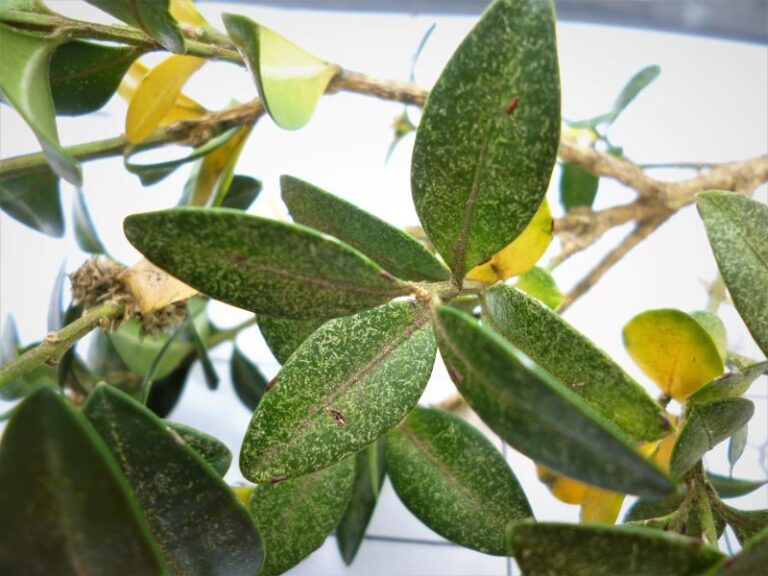Boxwood Mites (Eurytetranychus buxi)
GDD Window (base 50): 450-700
Overview:
- Overwinter as light-yellow eggs on leaves and twigs
- Neither a true cool nor warm season mite – most active during late spring and early summer (can resume activity again in late summer)
- Eggs are laid in the fall and hatch in midspring into six-legged larvae, then go through two nymph stages before emerging as adults
- Adults are yellow/tan/gray with long legs, about the size of a period
- Mating takes place immediately after adults emerge, and females begin to lay eggs within hours
- Several generations per year – life cycle is 18-21 days
- Found mostly on new growth
- Causes yellow to bronze stippling on foliage, premature defoliation
- Leaves may develop yellowish-white streaks on their upper sides
- Host plants: boxwoods
Management:
Cultural Practices:
- Natural predators: ladybird beetles, lacewings, predacious mites
- Plant resistant varieties
- Promote healthy plant growth
- Reduce plant stress
- Avoid nitrogen fertilizers
- Prune to remove severely infested leaves
- Dispose of clippings or dropped leaves, keep the surrounding area clean
Materials:
- Contact insecticides:
- Reduced risk:
- Tetronic acids [23]: spiromesifen
- Mitochondrial c. III electron transport inhibitors: Acequinocyl [20B], Bifenazate [20D]
- Glycosides [6]: Abamectin
- Pyrethroids [3]: Fluvalinate
- Reduced risk:
- Systemic insecticides:
- Organophosphates [1B]: Acephate
- Considerations:
- Will harm non-target species
Biorationals:
- Mite growth inhibitors[10A]: Hexythiazox
- Spinosyns [5]: spinosad
- Horticultural oils
- Treat overwintering eggs with 2-3% dormant oils
- Summer oils (1-2%) can control mild populations
- Insecticidal soaps


Disclaimer – Materials do not cover all possible control scenarios and are intended for licensed professionals. Tradenames do not imply endorsement and are used as examples. You must strictly follow the label for each compound prior to use. Rutgers is not responsible form is used materials or damages thereof. The label is the law. Labels will provide detailed information on use and restrictions. Additionally, application intervals, compatibility, surfactant use, PHI, PPE, important and other key information is described in detail. Always discuss treatments with your local agents. Note: Neonicotinoids can only be legally applied in commercial agriculture settings by licensed applicators. Guidelines and recommendations made in this presentation are specific to the state of New Jersey.
